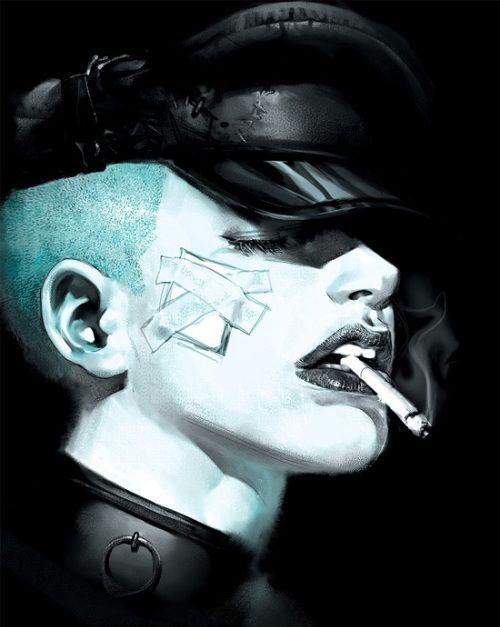90s’ Punk style: rebirth of a fashion trend
Clothes: black or vivid color, worn-out jeans and fur jacket, street style
Accessories: silver, metal, ragged, rivet, exaggerate make up, thick black eye line and shadow, dark lips
Hairstyle: vivid color, exaggerate hair design, bizarre and colorful
Punk Music in 90s’:
Nirvana 《In Utero》
Bikini Kill 《Pussy Whipped》
Rage Against The Machine 《The Battle of Los Angeles》Punk Music in 90s’:
Bikini Kill 《Pussy Whipped》
Rage Against The Machine 《The Battle of Los Angeles》Punk Music in 90s’:
Nirvana 《In Utero》
Bikini Kill 《Pussy Whipped》
Rage Against The Machine 《The Battle of Los Angeles》
Green Day 《1039 Smoothed Out Slappy Hours》
Bikini Kill 《Pussy Whipped》
Rage Against The Machine 《The Battle of Los Angeles》
Green Day 《1039 Smoothed Out Slappy Hours》
Representation of Punk development in 90s’:
Vivian Westerwood
It
is a famous brand of Punk style. Its producer is Vivian Westerwood who
created the brand in London. She is a friend of Malcolm Mclare who is
the leader of a punk band The Sex Pistol. Vivian Westerwood designed the
clothes and accessories for the band and then opened a store in London.
After that, the punk style is back to 90s.
The development of Punk from 90s till now
Avril Lavigne:
A punk singer and star, bring back another trend of punk.